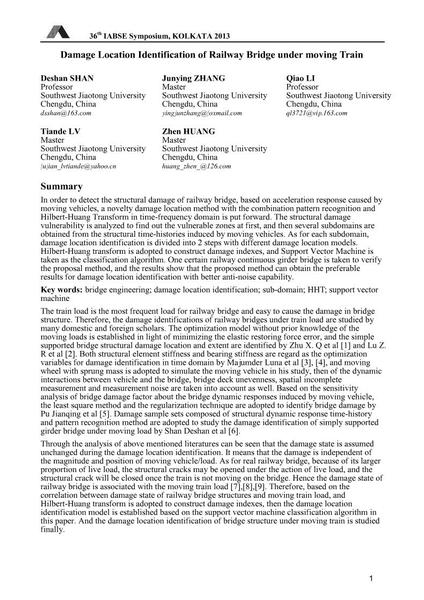Damage Location Identification of Railway Bridge under moving Train

|
|
|||||||||||
Bibliografische Angaben
| Autor(en): |
Deshan Shan
Junying Zhang Qiao Li Tiande Lv Zhen Huang |
||||
|---|---|---|---|---|---|
| Medium: | Tagungsbeitrag | ||||
| Sprache(n): | Englisch | ||||
| Tagung: | IABSE Symposium: Long Span Bridges and Roofs - Development, Design and Implementation, Kolkata, India, 24-27 September 2013 | ||||
| Veröffentlicht in: | IABSE Symposium Kolkata 2013 | ||||
|
|||||
| Seite(n): | 1-8 | ||||
| Anzahl der Seiten (im PDF): | 8 | ||||
| Jahr: | 2013 | ||||
| DOI: | 10.2749/222137813808627082 | ||||
| Abstrakt: |
In order to detect the structural damage of railway bridge, based on acceleration response caused by moving vehicles, a novelty damage location method with the combination pattern recognition and Hilbert-Huang Transform in time-frequency domain is put forward. The structural damage vulnerability is analyzed to find out the vulnerable zones at first, and then several subdomains are obtained from the structural time-histories induced by moving vehicles. As for each subdomain, damage location identification is divided into 2 steps with different damage location models. Hilbert-Huang transform is adopted to construct damage indexes, and Support Vector Machine is taken as the classification algorithm. One certain railway continuous girder bridge is taken to verify the proposal method, and the results show that the proposed method can obtain the preferable results for damage location identification with better anti-noise capability. |
||||
